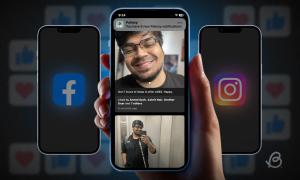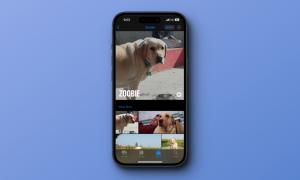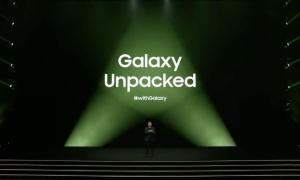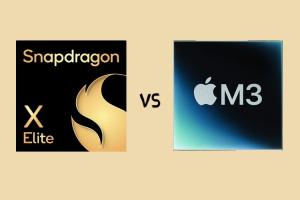Apple’s “Spatial Computing” headset, as the company will have you call it, is a device that we’ve been hearing rumors about for years. So obviously, the hype around the Apple Vision Pro was insanely high when the company finally announced and then launched the VR headset.
Unfortunately for me, Apple launched it exclusively in the US, which meant that I, being in India, could not get one. But get one, I did, because we managed to import the Apple Vision Pro VR headset.
And that’s when the problems started.
Excited as I was to be testing the Vision Pro, I did not expect the kind of hurdles I would be facing very soon.
The Setup Process
The setup process for Vision Pro looked and felt wonderful. At least at first.
It automatically adjusts the lenses based on your inter-pupillary distance — something I have had to do manually, with a lot of inhuman wiggling and bending of fingers on the Meta Quest 2 back when I was testing that (read: playing VR Cricket on it).
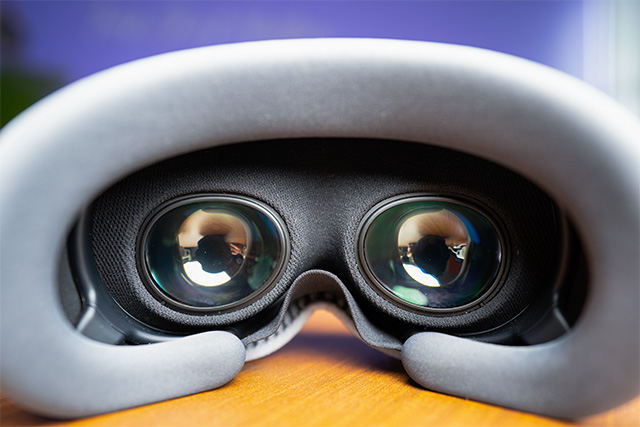
It calibrates eye-tracking by making you look at, and pinch, several colorful dots on the screen. It maps and calibrates itself for use with your hands.
It’s a lot of neat little touches that make this device feel uniquely Apple in the sense that it doesn’t have to do any of these things, and can probably work just fine without calibrating everything automatically… but it’s very Apple-like to over-engineer everything and make it just slightly better in a hundred different places to come up with a product that feels well ahead of its competition, even if it is, at the end of the day, just another VR headset.
But it’s better than anything else I have tried, and I have tried a lot of VR, AR, and MR headsets.
Soon, however, I started noticing problems. Not just in the sheer weight of this headset, which is insanely poorly distributed, but in the setup process itself.
The iPhone Part
You know how you set up a brand new iPad, and it lets you use your iPhone to quickly set up Apple ID, passcodes, etc on your new iPad without you having to type everything in?
On the Vision Pro, you do have to “bring it close to an iPhone”, and tap on the admittedly gorgeous-looking pop-up to begin the setup process.
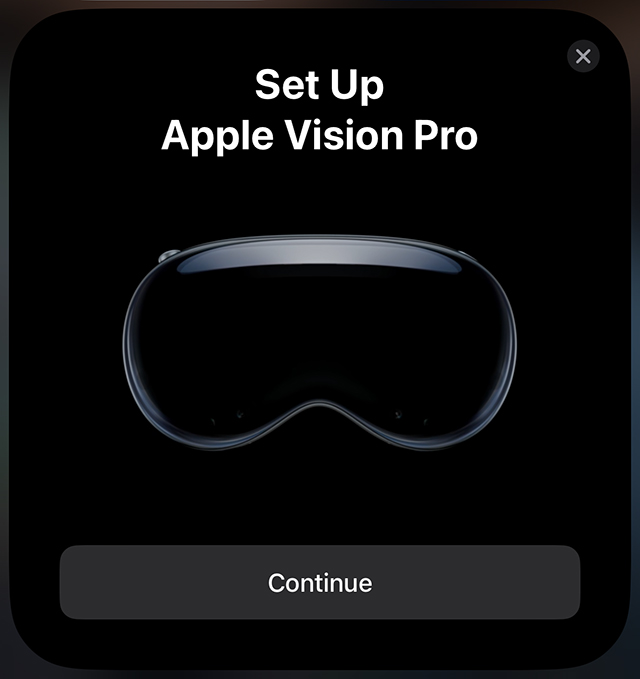
However, that’s all it does. It starts the setup process.
From that point forward, you have to enter your Apple ID and password on Vision Pro by using the “Spatial” keyboard, which you will definitely not be used to by that point. And if, like me, you use a password generated by a password manager, you’ll have an infuriating time entering that jumble of letters, numbers, and symbols into the Vision Pro.
It took me 5 tries to finally enter the password correctly because my Apple ID password is insanely long, and insanely jumbled up.

Worse yet, is the part that Vision Pro won’t let you use your iPhone to input text. Why? I do not know. You can use your iPhone to enter text on an Apple TV, but for some reason, you can’t do that on Vision Pro. That seems like an odd thing to leave out of the feature set.
Still, once you get done with the initial setup, there’s a lot to like about Vision Pro.
The Good
UI
Immediately after you’re done with the initial setup, you are greeted with the app launcher (think Launchpad but in your living room). And it’s instantly clear how good this headset is at the things it should be good at.
With displays sitting this close to your eyes, pixel peeping should be no issue. But Apple’s micro-OLED displays boast a resolution so high, that I could never notice a pixel in all my testing and usage of the device.
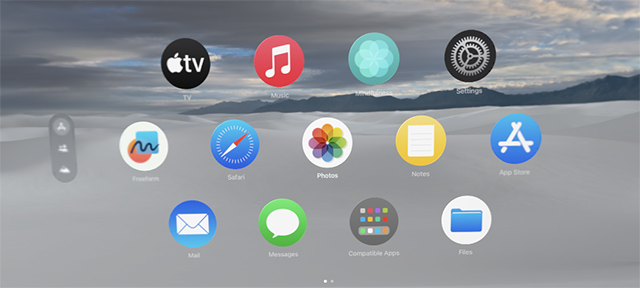
For what Apple says, there are 23 million pixels shooting RGB lights straight into your eyes here, and each pixel is 7.5 microns in size, around the same as the diameter of a red blood cell, but I digress.
The user interface on the Apple Vision Pro is simply stunning. It feels very obviously derivative of macOS, iOS, and iPadOS UI elements, and yet it feels completely different at the same time. It’s a wonderful blend of design that is instantly familiar to anyone who has used an Apple device, and that will still leave you in awe of how pretty everything looks.
UX
Then there’s the user experience aspect of the interface, and the Vision Pro has a bunch of very well-thought-out UX choices. Two things stand out for me here.
The Immersive environment mode, which you can control by using the Digital Crown, works in a way that I have not seen any other headset work.

I usually preferred using the headset without the immersive mode turned on because I was at work and constantly crashing into your colleagues while wearing a VR headset is generally frowned upon.
So, avoiding an HR email asking me to give up the Vision Pro, I only tested the immersive mode a few times, but it’s so well animated, and the way it slowly wraps around your field of view and extends behind you as you rotate the dial truly feels like you jumped onto the moon, and are somehow surviving in your work outfit in space.
Then there’s the fact that the Vision Pro does what I have always wanted my living room lights to do — dim the lights when I watch a movie.
Obviously, it doesn’t actually dim the lights, but if you have a movie loaded up on, say, the TV app, or a YouTube video open in visionOS, the moment you look towards the movie, the ambient lights start dimming down, giving things a truly cinematic experience. That is helped along by the fact that you can make the video as large as a cinema screen… almost.
Eye Tracking
Since there are no controllers for the Vision Pro, the only way to click, tap, or whatever it is that you do in “spatial computing”, is by looking at things and pinching your fingers together.
You can also just walk up to the button or icon and tap it with your finger, but eye tracking is just more cool.
Plus it works well, and as Apple claimed, you really can keep your hands anywhere and the headset can recognize pinching and dragging gestures.
There is only one real issue that I have with Eye Tracking, but more on that later. For now, we’re looking at the good things.
Window Anchoring
As I said towards the beginning of this “almost-a-rant” article, I have used a lot of AR and VR headsets, and honestly, things move around a lot in VR. It’s even worse in AR.
On the Vision Pro, however, windows get anchored as if you super-glued them to the virtual world. You can walk around them, move closer or farther, leave the room, and come back, and they just. stay. right. there.

It’s so good it almost makes you laugh at how truly powerful this headset must be, and how well it must be processing everything it sees with its sensors and cameras.
And it is this that brings us to the next good thing about Vision Pro.
”Spatial Computing”
I get it, Spatial Computing is marketing mumbo-jumbo to try and separate the Vision Pro from all the other headsets out there.
However, with the Vision Pro, it does feel like Spatial Computing should be (and could be) a thing.
Because window anchoring works so wonderfully, you truly can create a whole setup around your home (or studio, as was the case with me), with different areas showing different apps and windows. You can have the TV app set up in your living room, a note on your refrigerator with your shopping list, a YouTube video in your workshop showing you how to build something you’ve been itching to build, and a huge number of Safari windows in your home office, with all your work-related websites and tabs open all around you.
It truly is an experience that I have not yet experienced on any other headset, and it makes me want to call it “Spatial Computing” sometimes. But I won’t.
Object Detection
There’s another really useful feature in the Vision Pro that I haven’t seen anyone talk about.
Because you can place your app windows pretty much anywhere you want, a lot of times these windows might actually be behind your bedroom wall or an obstacle. So, you might end up trying to approach the open app, and stumble on the random tripod that the video team left in the middle of the studio (I swear this isn’t from personal experience). However, when you get too close to an object that’s not visible on your Vision Pro, it shows a warning sign to inform you that you’re too close to an object.
Other Good Stuff
There’s obviously a lot of good things going on here. I could bring my MacBook display into the Vision Pro and use it as a huge screen — something I have always wanted to do, and only now am realizing is not that useful. The point is, it’s a nice feature to have, even though it’s not anything new, other VR headsets also offer similar features in many cases, but Apple’s is, by far, the better finished product.

The best part about connecting my MacBook to the Vision Pro, apart from the novelty of using a MacBook Air with a display larger than a 55-inch TV, is that I can then use my Mac keyboard and trackpad to control all the apps inside Vision Pro.
Truth be told, there is input lag here, it’s barely noticeable, true, but it’s there and you can feel it to some extent. It means that personally, I was fine using the Mac for regular work without any latency making things difficult, but if you’re a video editor, your mileage may vary.
There’s also the fact that Vision Pro offers a unique peace of mind at work that I didn’t expect — nor did I notice it at first because the passthrough video is of very high quality and it feels like everyone can see your apps simply because you can see everyone else and your app windows are hanging in the air.

However, since all this is happening literally an inch away from your eyes, the fact remains that you can have your iMessages open alongside a Ted Lasso stream, and no one will ever know.
The Bad
The good things about the Vision Pro are really good, but there are a bunch of issues as well. For one, the boot-up time for the headset is unlike anything I have ever seen from Apple. It takes almost a minute to boot up, and after years of using MacBooks that boot up in seconds, this just feels too damn slow. Obviously, I ended up rarely shutting it down, but putting it into standby mode instead, but if you’re more responsible than I am, you might want to shut down your Vision Pro, and then you’ll end up waiting for what seems like an eternity when you want to turn it on again.
Then there’s the fact that the battery pack is a separate unit. A lot has been said by other reviewers and enthusiasts about this particular choice by Apple, and yes, it is annoying to have a battery that you need to remember to carry around with you while you move around with the Vision Pro on your face. It doesn’t even offer any particular advantages in terms of battery life, you still get around 2 to 3 hours before you need to charge it up, and that’s around the same as the Quest Pro, which has its battery pack included in the headband, and is still more comfortable than the Vision Pro.
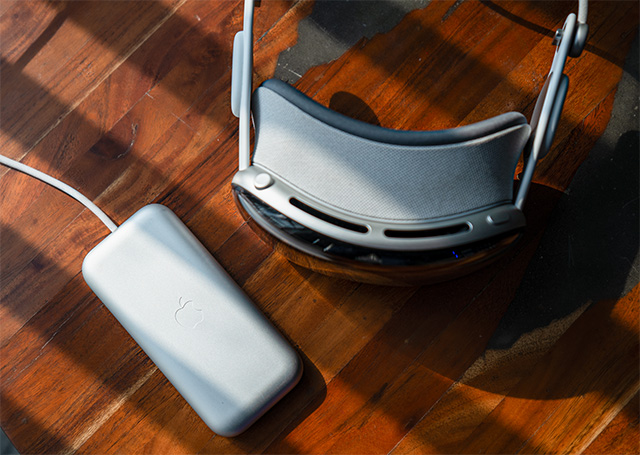
Lastly, there’s the big one, and this is applicable for people who want to try Vision Pro outside of the US — there’s no App Store for you. It doesn’t matter that you spent $3500 to get a first-gen product. It doesn’t matter that you have an Apple ID, possibly with subscriptions to every Apple service in existence. It doesn’t matter at all. Because the Apple Vision Pro is currently a US-only device, if you sign in with your non-US Apple ID, as I did, the App Store will simply not work for you.
Of course, you could change your Apple ID region to US, but that means losing all your subscriptions.
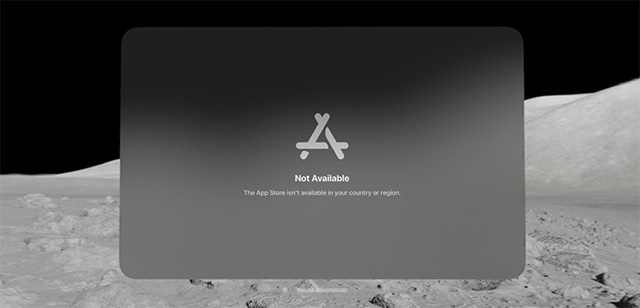
Or you could create a US Apple ID — that sort of fixes things to some extent. I tried signing in with a US Apple ID on the Vision Pro, and at least the App Store loaded up then. However, unless you also have a US-based payment method added to your US Apple ID, you obviously can’t install any paid apps, or sign up for any free trials for Apple Arcade, or Apple TV+.
That means, your Vision Pro experience will be extremely hindered, as was mine, by the simple fact that you just can’t install many apps on the thing. Imagine knowing there’s a whole set of games for Vision Pro, but you can’t get them because you can’t subscribe to Apple Arcade without a US-based Credit/Debit Card.
There are also bugs in visionOS, which is not entirely unexpected, but annoying nevertheless. EyeSight looks plain weird, as everyone on the internet has also said, it’s just uniquely creepy.

But the eye tracking, while accurate, is annoying to use at times. Why? Because when you look at something, it highlights it… you know, so you’re aware of what you’re looking at, and what you’ll be clicking if you pinch your fingers. However, this highlight is usually so indistinguishable from the non-highlighted buttons that you will end up clicking the wrong things, or thinking that Eye Tracking just didn’t work and isn’t recognizing that you’re looking at a button or an icon.
Why Apple?
What I don’t understand, is why would Apple close down the App Store in other countries. Could it be due to payment handling for different regions? Possibly, but I don’t think so. Apple already has its App Store available in India, for example, for every device other than Vision Pro. Could it be because Apple simply didn’t expect anyone from outside the US to buy its hyped new “Spatial Computing” headset? I refuse to believe that anyone could be that unaware of how much people want to try every new thing Apple releases. Especially Apple itself.
It just boggles my mind that Apple wouldn’t let me use the App Store with my Apple ID, even though I have clearly purchased the device. I have an Apple ID that works on all my other Apple devices. I have payment methods added to it. I even have subscriptions to Apple TV, Apple Arcade, Apple Music, and more.
Apple has always been a walled garden when it comes to its products, but locking down the App Store just seems insane to me. At the very least, it makes my experience of using Vision Pro, less impressive; because I simply can’t try a lot of the things that are impressive about it.
I can’t even entirely blame Apple. They did say it’s for US customers only right now, and I could have been patient. But that’s one thing I am not when it comes to technology. I can’t just wait till our Cupertino overlords decide that they can sell Vision Pro in other countries. And I wish they would just let me use the App Store.












